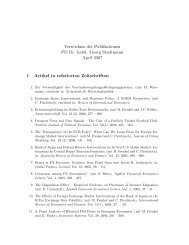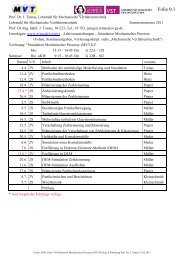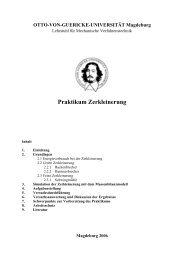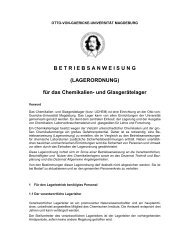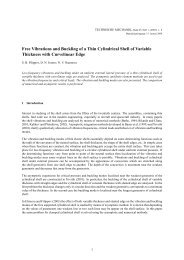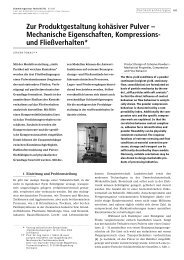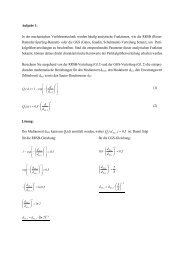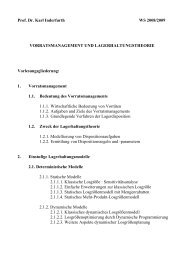Mechanics of nanoparticle adhesion â A continuum approach
Mechanics of nanoparticle adhesion â A continuum approach
Mechanics of nanoparticle adhesion â A continuum approach
You also want an ePaper? Increase the reach of your titles
YUMPU automatically turns print PDFs into web optimized ePapers that Google loves.
28J. Tomas[58], Sadd [55] and, especially, Thornton [53, 60]. A complete survey <strong>of</strong> loading,unloading, reloading, dissipation and detachment behaviors <strong>of</strong> titania is shown inFig. 5 as a combination <strong>of</strong> Fig. 1a to Fig. 4e. This <strong>approach</strong> may be expressedhere in terms <strong>of</strong> engineering mechanics <strong>of</strong> macroscopic continua [1, 2] as the history-dependentcontact behavior.2.3.3. Viscoplastic contact behavior and time dependent consolidationAn elastic-plastic contact may be additionally deformed during the indentationtime, e.g., by viscoplastic flow (Section 2.1.3). Thus, the <strong>adhesion</strong> force increaseswith interaction time [32, 49, 77, 128]. This time-dependent consolidation behavior(index t) <strong>of</strong> particle contacts in a powder bulk was previously described by aparallel series (summation) <strong>of</strong> <strong>adhesion</strong> forces, see Table 1, last line marked withTomas [122–125, 146–149]. This method refers more to incipient sintering orcontact fusion <strong>of</strong> a thermally-sensitive particle material [62] without interstitialadsorption layers. This micro-process is very temperature sensitive [122, 124,125, 146].Additionally, the increasing <strong>adhesion</strong> may be considered in terms <strong>of</strong> a sequence<strong>of</strong> rheological models as the sum <strong>of</strong> resistances due to plastic and viscoplastic repulsionκ p + κ p,t , line 5 in Table 2. Hence the repulsion effect <strong>of</strong> “cold” viscousflow <strong>of</strong> comparatively strongly-bonded adsorption layers on the particle surface istaken into consideration. This rheological model is valid only for a short-term in-Table 2.Material parameters for characteristic <strong>adhesion</strong> force functions F H (F N ) in Fig. 8Constitutive model <strong>of</strong> contactdeformationRepulsion coefficientConstitutive models <strong>of</strong>combined contact deformationContact area ratioContact consolidationcoefficientIntersection with F N -axis(abscissa)Instantaneous contactconsolidationplasticκpCVdWHsls ,p= p =3f 6 ⋅ π ⋅ a F = 0 ⋅ p felastic–plastic2AplTime-dependent consolidationviscoplasticκpt ,pVdW= ⋅ tηKelastic–plastic and viscoplasticκA= + κ3At ,= +3 ⋅ ( Apl+ A3el )3 ⋅ ( Apl + Avis + Ael)κpκ =κ −κApF a h pNZ ,≈−π ⋅F=0 ⋅r⋅12 , f≠ f( CHsls, )κFvis2Aplκp+ κp,t=κ −κ −κNZtot , ,+ AAt , p pt ,( CHsls, )visπ ⋅a ⋅h ⋅ p≈−1+ p ⋅t / η≠ fF=0 r12, ffK



